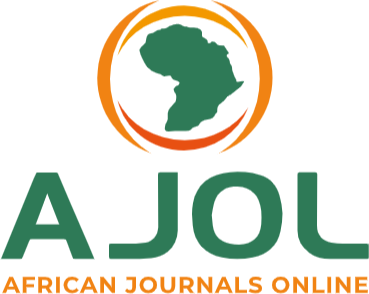Synthetic Approaches, Classification, Properties and Application of Metal-Organic Frameworks: A Review
Keywords:
Metal–organic frameworks (MOFs); Synthetic methods, Classification, Applications of MOFsAbstract
Metal-organic (MOF) is a group compound that consists of an ion or metal group coordinated by organic ligands to make many-dimensional structures. MOFs are subclassed by coordinated polymers with speciality porous structures. The pursuit of rapid development in the area of catalysis, solar energy, environmental remediation, wastewater treatment and other aspects of ecological and sustainable chemistry has prompted substantial research by material chemists, physicists, academics and other scientists for the development of porous material. A lot of energy had been invested in this course by scientists, research organizations and public sector agencies from antiquity, but the resulting solution was somewhat undesirable until two decades ago when Metal-Organic Frameworks (MOFs) appeared to offer a glimpse of a solution to those challenging issues. The adaptability, flexibility, uniqueness and usability of the metal-organic frameworks material, and its suitability to every facet of scientific and technological advancement has since triggered an incredible upsurge in studies aimed at uncovering more of the inherent influential properties of the materials, and its improvement for the betterment of material science and research world. This review is aimed at investigating some of the recent advancements/breakthroughs in metal-organic frameworks, synthetic methodologies and applications.
Downloads
Published
Issue
Section
Similar Articles
- Aniekan Udongwo, Monitoring, Assessment, and Remediation of Heavy Metal Contamination: Techniques, Strategies, and Policy Frameworks , Communication In Physical Sciences: Vol. 10 No. 3 (2023): VOLUME 10 ISSUE 3 (2023-2024)
- Elizabeth C. Nwaokorongwu, Dual Solution Synthesis and Characterization of Sns:Zns Alloyed Thin Films and Possible Applications in Solar Systems and Others , Communication In Physical Sciences: Vol. 9 No. 2 (2023): VOLUME 9 ISSUE 2
- E. C. Ogoko, Pollution status of soil within the vicinity of Automobile mechanic workshops in Owerri Municipality, Nigeria , Communication In Physical Sciences: Vol. 4 No. 1 (2019): VOLUME 4 ISSUE 1
- Henrietta Ijeoma Kelle, Maureen Nkemdilim Chukwu, Emily Osa Iduseri, Emeka Chima Ogoko, Rawlings Abem Timothy, Absorption Studies of Some Agricultural Solid Wastes as Biosorbent for the Clean-up of Oil Spill , Communication In Physical Sciences: Vol. 11 No. 4 (2024): VOLUME 11 ISSUE 4
- Matthew Tsepav, Prof. Musa Amanabo , Abduljelli Uthman , Improving Free Radical Scavengers in Vernonia amygdalina (Bitter leaf) through Soil Amendment with Organic Fertilizer , Communication In Physical Sciences: Vol. 12 No. 7 (2025): Volume 12 issue 7
- Ladidi M. Abu , Tiger Nut (Cyperus esculentus) Tuber: A Sustainable Resource for Industrial Starch: A Review , Communication In Physical Sciences: Vol. 11 No. 2 (2024): VOLUME 11 ISSUE 2
- Humphrey Sam Samuel, Ugo Nweke-Maraizu, Gani Johnson, Emmaneul Etim Etim, A Review of Theoretical Techniques in Corrosion Inhibition Studies , Communication In Physical Sciences: Vol. 9 No. 4 (2023): VOLUME 9 ISSUE 4
- Humphrey Sam Samuel, Nonelectrochemical Techniques in corrosion inhibition studies: Analytical techniques , Communication In Physical Sciences: Vol. 9 No. 3 (2023): VOLUME 9 ISSUE 3
- Onanuga Omotayo Aina, Titus Morrawa Ryaghan, Bello Musa Opeyemi, Momoh Daniel Clement, Goat Horn Biochar as a Low-Cost Adsorbent for the Removal of Cadmium and Zinc ions in Aqueous Solution , Communication In Physical Sciences: Vol. 10 No. 3 (2023): VOLUME 10 ISSUE 3 (2023-2024)
- Hauwa, I. Muhammad, Monday Musah, Sheriff Abdulfatai, Heavy Metal Concentrations in Various Species of Onion Bulbs in (Allium Spp.) Lapai Market, Niger State, Nigeria , Communication In Physical Sciences: Vol. 7 No. 2 (2021): VOLUME 7 ISSUE 2
You may also start an advanced similarity search for this article.




